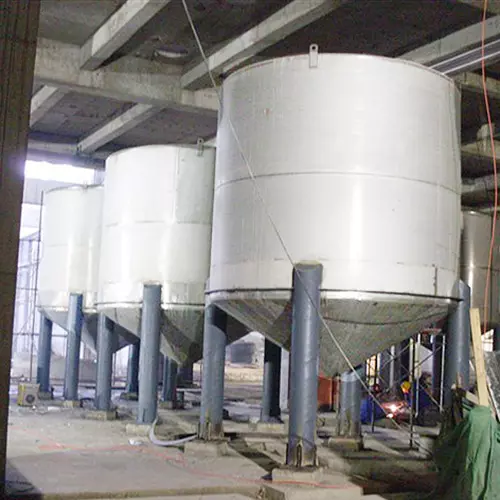Selection of Pressure Vessel Welding Materials for Varied Conditions (Part Two)

Navigate challenges in sub-zero operations with low-temperature alloys. Ensure welding quality in diverse applications, from base and acid welding rods to austenitic stainless steel. Explore low-alloy high-strength steel and carbon steel for versatile load-bearing solutions. Understand low-alloy heat-resistant steel's oxidation resistance. Technicians play a crucial role in upholding welding quality for pressure vessel safety and service life. In the following parts, there will be discussing the slection of welding materials for pressure vessels used in different situation.
I. Low-Temperature and Low-Alloy Welding Materials
I. Low-Temperature and Low-Alloy Welding Materials
Navigating Sub-Zero Challenges: The operational terrain below minus 20 °C introduces potential brittleness concerns, necessitating a comprehensive approach to material selection.
Engineering Resilient Structures: The intricate control of metal structure and alloy composition becomes a critical aspect, finely tuned to ensure not just compliance but optimal performance in low-temperature environments.
Strategic Material Selection: Delving into the realm of grades like 10MnDG, 09MnNiDR, and 15MnNiDR involves a detailed examination of impact resistance, requiring a nuanced understanding of performance metrics.
II. Base and Acid Welding Rods
Versatility in Structural Welding: The application of welding rods across various structures demands a thorough exploration of their attributes, including crack resistance, high impact toughness, and low hydrogen content.
Meticulous Pre-Welding Protocols: The significance of rigorous cleaning and drying protocols cannot be overstated, ensuring a defect-free welding process by preventing issues stemming from oil, rust, and water.
Acid Rods for Precision: Within the high-stakes realm of pressure vessels, where high strength, impact toughness, and plasticity are non-negotiable, the selection of acid welding rods emerges as a strategic choice for ensuring welding efficacy.
Meticulous Pre-Welding Protocols: The significance of rigorous cleaning and drying protocols cannot be overstated, ensuring a defect-free welding process by preventing issues stemming from oil, rust, and water.
Acid Rods for Precision: Within the high-stakes realm of pressure vessels, where high strength, impact toughness, and plasticity are non-negotiable, the selection of acid welding rods emerges as a strategic choice for ensuring welding efficacy.
III. Austenitic Stainless Steel Welding Materials
Dominance in Pressure Vessels: Austenitic stainless steel's prevalence in pressure vessels necessitates an in-depth exploration of ultra-low carbon stainless steel welding materials, given their specific advantages in welding applications.
Nuanced Selection Process: A meticulous understanding of the product's operational intricacies becomes paramount, considering not just the corrosion resistance but also acknowledging limitations in low-temperature performance for a holistic material selection.
Nuanced Selection Process: A meticulous understanding of the product's operational intricacies becomes paramount, considering not just the corrosion resistance but also acknowledging limitations in low-temperature performance for a holistic material selection.
IV. Low-Alloy High-Strength Steel and Carbon Steel Welding Materials
Versatility in Load-Bearing Solutions: Positioned for temperatures ranging from minus 20 °C to 425 °C, these materials offer versatile solutions, demanding an intricate selection process to align with specific application requirements.
Nuanced Considerations: Beyond the basics of control over carbon equivalent, evaluating stress corrosion, and understanding the impact of heat treatment on overall strength adds layers of complexity to the material selection journey.
Nuanced Considerations: Beyond the basics of control over carbon equivalent, evaluating stress corrosion, and understanding the impact of heat treatment on overall strength adds layers of complexity to the material selection journey.
V. Low Alloy Heat Resistant Steel Welding Materials
Oxidation and Creep Resistance: Exploring low-alloy heat-resistant steel, including notable grades like 15CrMo and 12Cr1MoV, introduces considerations of oxidation and creep resistance under high temperatures.
Adherence to Standards: The application of these materials demands strict adherence to relevant technical standards, where understanding allowable stress under different temperature conditions becomes crucial for informed decision-making.
Adherence to Standards: The application of these materials demands strict adherence to relevant technical standards, where understanding allowable stress under different temperature conditions becomes crucial for informed decision-making.
VI. Upholding Welding Quality for Pressure Vessel Safety
Direct Impact on Service Life: The welding quality serves as a linchpin, directly influencing not just the immediate welding process but the broader service life and safety of pressure vessels.
Technician Imperative: In this intricate landscape, technicians play a pivotal role in a thorough analysis of operational scenarios, rational welding material selection, and meticulous oversight to ensure welding quality. This comprehensive approach aims to foster safe production practices and mitigate the risk of accidents, emphasizing the critical role of technicians in upholding pressure vessel safety.
Technician Imperative: In this intricate landscape, technicians play a pivotal role in a thorough analysis of operational scenarios, rational welding material selection, and meticulous oversight to ensure welding quality. This comprehensive approach aims to foster safe production practices and mitigate the risk of accidents, emphasizing the critical role of technicians in upholding pressure vessel safety.

